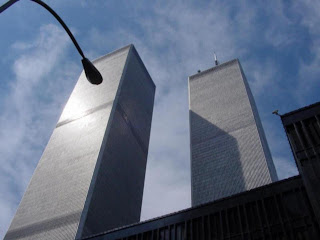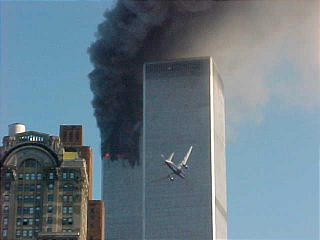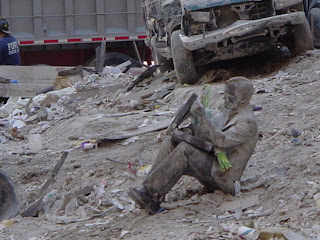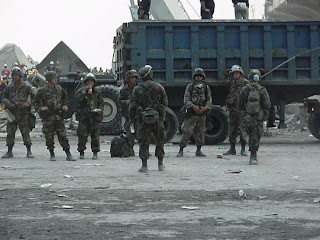F4- Looks best at 1/25sec of a shutter speed. Its background is blurry, but you can see the couple clearly. The photographer could have used better focus.
F5.6-Loos best at 1/60sec of a shutter speed. Its background is a bit less blurry than F4 with 1/25sec. The photographer should have used more shutter speed.
F8-Looks best at 1/30sec of a shutter speed. Its background is not so blurry , and the couple are clear to see. The photographer could have used better lighting.
F11-Loos best at 1/30sec of a shutter speed. Its background is a bit clear with a little bit blur, the couple are clear to see, but its a bit dark. The photographer could have used better lighting and make the picture look lighter.
F16-Looks best at 1/30sec of a shutter speed. Its background is a bit blurry, but you can tell what they are, the couple are clear and you can distinguish them. The photographer could have done the same except the lighting.
F22-Looks best at 1/30sec of a shutter speed. Its background is clear but the couple look dark. The photograph looks like it had low lighting. The photographer could have used better lighting to make the picture look lighter.
Thursday, September 29, 2011
ISO.
ISO 200
ISO 3200
1. What are the advantages of shoot at a higher ISO at a sporting event like basketball or a night football game? The photograph has more action and texture. But its low quality.
2. What suggestions did the author make about using a low ISO? The lower the ISO number, the less it is affected by light.
3. What suggestions did the author make about using a high ISO? The higher the ISO number, The more sensitive it is.
4. At the camera near you, please tell me what ISO's are available on your camera? 1600, 800, 400, 200, 100
Tuesday, September 27, 2011
Shutter Speed.
Photograph with high shutter speed.
Photograph with slow shutter speed.
1. If you were assigned to shoot at Blue and Gold night, which will be next month, what shutter speeds do you think you would have to shoot at the following events that night I would like you to answer the question for the following two situations:
At the beginning while the sun is still partially up and the courtyard has reasonable light
a.) the dunking booth-Fast shutter speed ; 1/1000th
b.) the food eating contest-Fast shutter speed ; 1/1000th
c.) the rock climbing wall-Slow shutter speed ; 1/10th
d.) someone working at a booth-Slow shutter speed ; 1/10th
e.) the DJ/MC working at the middle of the circle-Fast shutter speed ; 1/1000th
f.) the Diamonds performance-Fast shutter speed ; 1/1000th
Towards the end when there is no sun and has gotten dark enough that you can't see from one end of the courtyard to the other.
a.) the dunking booth-Fast shutter speed ; 1/250th
b.) the food eating contest-Fast shutter speed ;1/4000th
c.) the rock climbing wall-Slow shutter speed ;1/10th
d.) someone working at a booth- Slow shutter speed ;1/10th
e.) the DJ/MC working at the middle of the circle-Long shutter speed ;1/4000th
f.) the Diamonds performance- Long shutter speed ;1/4000th
2. List the three settings your camera has regarding setting shutter speed (these are found at #5 on the Shutter Speed website. Explain how each works - DO NOT COPY AND PASTE, use your own words.
-Aperture : It sets automatically your shutter speed.
-Shutter : You set the shutter speed, and the camera chooses the aperture.
-Manual : Where you set both, Shutter and Aperture manually.
3. With the camera near you, what are the shutter speeds available to you on that camera? 1/4000th ,
Aperture.
Photograph taken with f2.8
Photograph taken with f16
2. Finish this sentence - the smaller the Aperture , the more it focuses , the higher the Aperture, the sharper it gets.
3. In your own words tell me how aperture impacts Depth of Field? The higher the f-stop is, the sharper the photograph turns out ; the lower the f-stop is , the more focus it has, and blurs the background.
4. With the camera near you - tell me the F stops available on the lens currently attached. . .f8.0, f22,
Friday, September 23, 2011
Africa- Nick Brandt
My reaction to those photographs in the power point is that they are absolutely beautiful. The pictures are so amazing they make me want to go to Africa. Those photographs are great pictures and he is a great photographer. Nick Brandt too these photographs with a Pentax 67 and using a short lens. Brandt took these pictures because he had already done photography but he never thought of himself as a wildlife photographer. He had already been to Africa before and he fell in love with the place that he decided to go back with his camera during holiday and take photographs there.
"My images are unashamedly idyllic and romantic, a kind of enchanted Africa. They're my elegy to a world that is steadily, tragically vanishing." - Nick Brandt
The picture to the right was my absolute favorite photograph from the power point.
here. Academic Shoot Reflection.
1. What challenges did you encounter while trying to get the photos following the rules I set out for you? I couldn't quite get a photograph of Balance.
2. What technical aspects of photography or the assignment in general did you find yourself thinking about the most? I didn't have technical aspects of photography because i had already taken pictures before , and this was way easier than the last time. I did think about the focus sometimes, but it no biggie.
3. If you could do the assignment again, what would you do differently now that you know some basic rules of photography? I would study the subjects before, so i would know exactly what to take a picture of.
4. What things would you do the same? I would use the same way of taking the pictures.
5. When you go out with your next set of prompts, which rule do you think will be the easiest to achieve? I think the subject of lines is easy, and also Rule of thirds.
6. Which rule do you think will be the hardest to capture? I think it would be Balance.
7. What rule are you still not totally clear on and what can you do to figure out what that rule is? I have troubles with Framing.
2. What technical aspects of photography or the assignment in general did you find yourself thinking about the most? I didn't have technical aspects of photography because i had already taken pictures before , and this was way easier than the last time. I did think about the focus sometimes, but it no biggie.
3. If you could do the assignment again, what would you do differently now that you know some basic rules of photography? I would study the subjects before, so i would know exactly what to take a picture of.
4. What things would you do the same? I would use the same way of taking the pictures.
5. When you go out with your next set of prompts, which rule do you think will be the easiest to achieve? I think the subject of lines is easy, and also Rule of thirds.
6. Which rule do you think will be the hardest to capture? I think it would be Balance.
7. What rule are you still not totally clear on and what can you do to figure out what that rule is? I have troubles with Framing.
Academic Shoot
-Framing-
How well did you follow the rule? Very well.
What is the subject ? Framing.
Is it clear to people looking at your photos what the subject is? Yes it is clear so people can look at them and be able to identify them as framing.
If you didn't follow the rule well, what could you have done differently? I could have used my fingers to make the frame and then take the picture.
How well did you follow the rule? Very well.
What is the subject ? Framing.
Is it clear to people looking at your photos what the subject is? Yes it is clear so people can look at them and be able to identify them as framing.
If you didn't follow the rule well, what could you have done differently? I could have used my fingers to make the frame and then take the picture.
-Lines-
How well did you follow the rule? Very well.
What is the subject ? Lines
Is it clear to people looking at your photos what the subject is? Yes it is clear.
If you didn't follow the rule well, what could you have done differently? I could have looked for different lines.
How well did you follow the rule? Very well.
What is the subject ? Lines
Is it clear to people looking at your photos what the subject is? Yes it is clear.
If you didn't follow the rule well, what could you have done differently? I could have looked for different lines.
-Avoiding Merges-
How well did you follow the rule? Good enough.
What is the subject ? Avoiding Merges.
Is it clear to people looking at your photos what the subject is? It is indeed.
If you didn't follow the rule well, what could you have done differently? I could have looked for a different merge.
How well did you follow the rule? Good enough.
What is the subject ? Avoiding Merges.
Is it clear to people looking at your photos what the subject is? It is indeed.
If you didn't follow the rule well, what could you have done differently? I could have looked for a different merge.
-Rule of Thirds-
How well did you follow the rule? Well enough.
What is the subject ? Rule of Thirds.
Is it clear to people looking at your photos what the subject is? Yes, yes it is clear for people to distinguish the photograph as a Rule of Thirds.
If you didn't follow the rule well, what could you have done differently? I could have had the tree a little more upwards.
How well did you follow the rule? Well enough.
What is the subject ? Rule of Thirds.
Is it clear to people looking at your photos what the subject is? Yes, yes it is clear for people to distinguish the photograph as a Rule of Thirds.
If you didn't follow the rule well, what could you have done differently? I could have had the tree a little more upwards.
-Simplicity-
How well did you follow the rule? Very well.
What is the subject ? Simplicity
Is it clear to people looking at your photos what the subject is? It is indeed clear for people that are looking at my pictures to know what the subject of the photograph is.
If you didn't follow the rule well, what could you have done differently? I could have been a bit more simple with the background.
How well did you follow the rule? Very well.
What is the subject ? Simplicity
Is it clear to people looking at your photos what the subject is? It is indeed clear for people that are looking at my pictures to know what the subject of the photograph is.
If you didn't follow the rule well, what could you have done differently? I could have been a bit more simple with the background.
-Balance-
How well did you follow the rule? Well enough.
What is the subject ? Balance
Is it clear to people looking at your photos what the subject is? Yes, yes it is.
If you didn't follow the rule well, what could you have done differently? I could have balanced the camera to make the picture look more balanced.
How well did you follow the rule? Well enough.
What is the subject ? Balance
Is it clear to people looking at your photos what the subject is? Yes, yes it is.
If you didn't follow the rule well, what could you have done differently? I could have balanced the camera to make the picture look more balanced.
Monday, September 19, 2011
Filling the Frame
This frame is being filled by students gathering around , looking at whats in front of them. This photograph has a lot going on , some students are happy, some are shocked, and some are enjoying it. The picture isn't just plain, it had bright colors, facial expressions etc.
Action and Emotion
This photograph is showing that the people may be praying for some reason. It shows emotion by the way they're holding hands together and looking down , as if they were praying of some sort, and they're all in a circle . This picture shows that they all are showing empathy towards each other.
The Story
The story for this photograph is that the girls are having way too much fun with their lab experiment. Its showing that they enjoy doing their science experiment, and their having fun.
Wednesday, September 14, 2011
Post shoot reflection
1. What challenges did you encounter while trying to get the photos of your first 3 prompts?
-I couldn't quite choose what i should take a picture of since they're so many things in this campus.
2. What technical aspects of photography or the assignment in general did you find yourself thinking about the most?
-I had trouble with the focus because every time i took a picture the focus would go bad , so i just had to fix the focus and the zoom before i took a picture.
3. If you could do the assignment again, what would you do differently now that you know some basic rules of photography?
-I would probably balance the photos and avoid all the merges , and also fix the framing.
4. What things would you do the same?
-I would just take the same pictures but with some of the rules of photography.
-I couldn't quite choose what i should take a picture of since they're so many things in this campus.
2. What technical aspects of photography or the assignment in general did you find yourself thinking about the most?
-I had trouble with the focus because every time i took a picture the focus would go bad , so i just had to fix the focus and the zoom before i took a picture.
3. If you could do the assignment again, what would you do differently now that you know some basic rules of photography?
-I would probably balance the photos and avoid all the merges , and also fix the framing.
4. What things would you do the same?
-I would just take the same pictures but with some of the rules of photography.
Monday, September 12, 2011
Simplicity

By simplicity , you narrow it down to the main focus. In this case the Twin Towers. There shouldn't be any merges , and the picture should balanced. Simplicity only means to make the photograph look better without so much detail on its surroundings.
Good example - The picture doesn't have too much going on and its simple.
Bad example -The light pole looks like its coming out of one of the towers.
Balance

The point of balance in a photograph is to level it out. If you balance the picture, then it looks more professional. By balancing the photograph your making sure the picture isn't tilted or anything like that.
Good example - The buildings don't look like they're tilting.
Bad example - The plane is falling down and its unbalanced with the buildings.
The Rule of Thirds

The Rule of Thirds is not having the main subject of the photo in the center, make it a more interesting photograph. A picture with The Rule of Thirds should depend on its main focus. The main focus of the photograph is off to the side. In this case, the statue in the photograph.
Good example - The main focus isn't in the middle of the photograph.
Bad example - The big part of a truck is behind the statue and it makes it look like they're both the main focus , when they're not.
Framing
Framing shows shadows. It should be the center of its interest. You should avoid merges while framing pictures. By framing a picture your centering it toward its main focus.
Good example - The shadows behind the people walking.
Bad example - All the things that are happening in the background of the people walking.
Good example - The shadows behind the people walking.
Bad example - All the things that are happening in the background of the people walking.
Avoiding Mergers

Avoiding merges should be when a photograph has an object and it wasn't suppose to be like that. It makes the picture look different.
Good example -This picture has a long stick and it looks like its going into the soldiers neck. (far right)
Bad example - The stick was obviously attached to the truck behind the soldiers.
Lines
This photograph has lines going straight. These lines are repetitive and catches your attention towards the pattern.
Good example - the horizontal lines
Bad example - The burned half of the lines make it look like they're two separate buildings and they're on top of each other.
Good example - the horizontal lines
Bad example - The burned half of the lines make it look like they're two separate buildings and they're on top of each other.
Red, Metal , Grumpy
-Grumpy-
I think i achieved avoiding merges and getting lines onto the picture, they're going symmetrically and make a good pattern.
-Metal-
I think i achieved lines, simplicity, balance, and avoiding merges.
I think i achieved lines, simplicity, balance, and avoiding merges.
-Red-
I achieved lines, balance, framing, and avoiding merges.
- I would like to shoot these prompts again, it was fun trying to find these subjects.
I achieved lines, balance, framing, and avoiding merges.
- I would like to shoot these prompts again, it was fun trying to find these subjects.
Tuesday, September 6, 2011
Great white and black photographers Part 2.
This picture was taken by Imogen Cunningham. She was born on April 12, 1883, in Portland, Oregon. She began taking photographs in 1901, while she was taking a course of photography at the University of Washington. She won a foreign study in 1910, and attended photographic courses at the Technische Hochschule in Dresden Germany. In 1932 she joined an association of West Coast photographers which was founded by, Ansel Adams, and Willard Van Dyke in 1934, under the name of Group f/64. After the brake up of f/64 , Cunningham ran a portrait gallery and taught at the San Francisco Art Institute. Her final photographs were published in After ninety in 1977. Sadly she past away on June 24th. 1976 in San Francisco
Warm up - Bastrop Fire 2011.
This picture was the one that impacted me the most because all you can see is flames. There's a lot of smoke, and it just makes me wonder why this all happened. This picture is so sad , and just thinking about all the families that were affected by these fires. This makes me sad just knowing its still going on right now.
Thursday, September 1, 2011
- Aperture - is a hole or an opening through which light travels
- Shutter - a photographic device that administers the exposure by limiting the time over which light is admitted.
- Exposure - the total amount of light allowed to fall on the sensor during the taking of a photograph.
- Depth of field - is the distance between the nearest and farthest objects in a scene that appear acceptably sharp in an image.
- F-stop - making the aperture size larger to allow more light through the lens.
- Focal length - a measure of how strongly the system converges or diverges light.
The camara
- Camera obscura - is an optical device that projects an image of its surroundings on a screen
- Camera lens - is an optical lens or assembly of lenses used in conjunction with a camera body and mechanism to make images of objects either on photographic film or on other media capable of storing an image chemically or electronically.

- Photographic film - is a sheet of plastic coated with an emulsion containing light-sensitive silver halide salts with variable crystal sizes that determine the sensitivity, contrast and resolution of the film.
- Shutter button - is a button found on many cameras, used to take a picture.When pressed, the shutter of the camera is "released", so that it opens to capture a picture, and then closes, allowing an exposure time as determined by the shutter speed setting.
Subscribe to:
Comments (Atom)


























